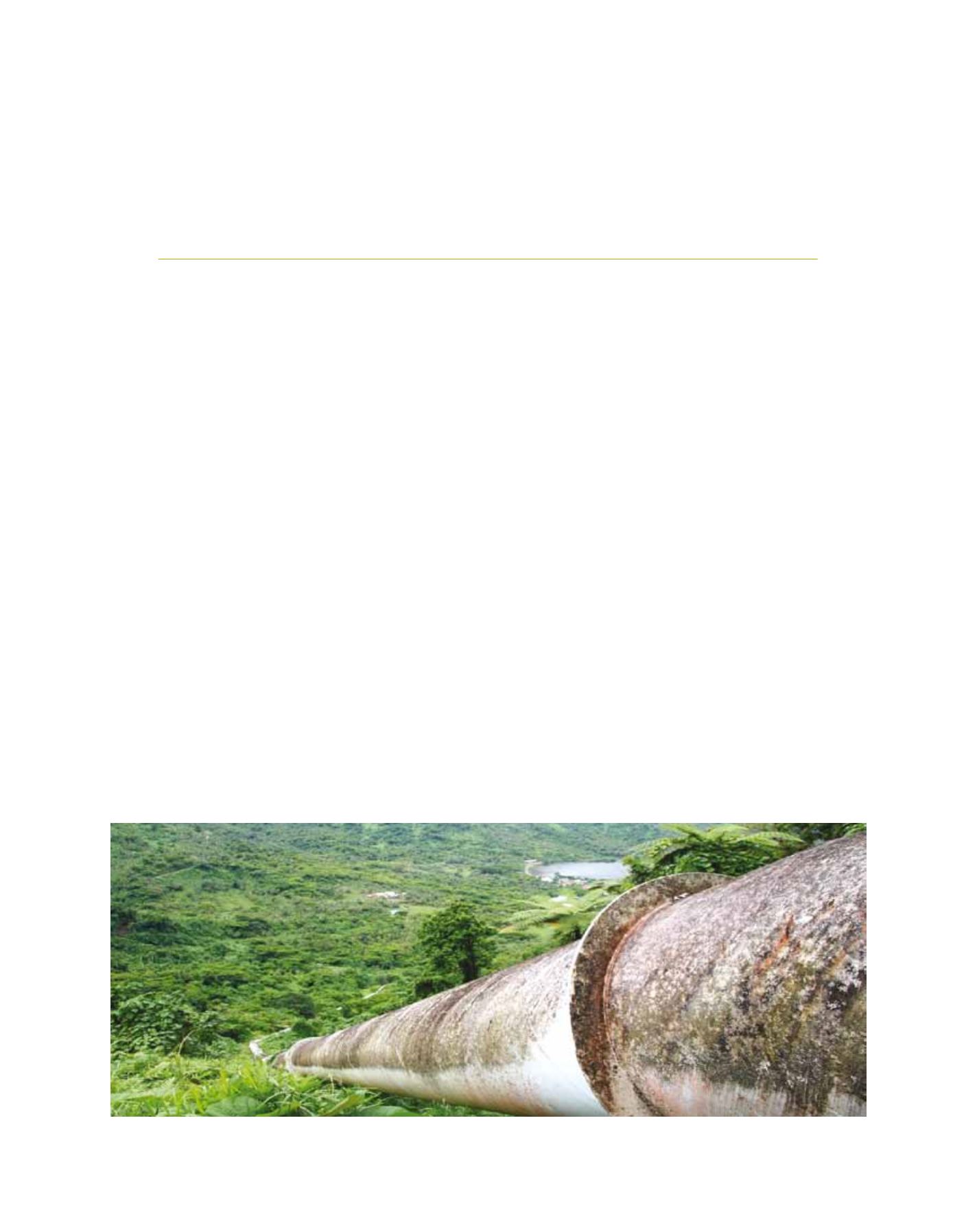

[
] 165
The use of seasonal climate forecasts to
inform decision-making and management
in the renewable energy sector of Samoa
J.A. Smith, E. Thompson and A. Amjadali, Australian Bureau of Meteorology;
S. Seuseu, Samoa Meteorological Service and W. J. Young, Electric Power Corporation
T
he climate of the Pacific region is heavily influenced
by El Niño Southern Oscillation (ENSO) phenomena
resulting in significant seasonal variability in rainfall
and temperature, which often causes droughts, flooding and
temperature extremes. Fortunately for the region, many climatic
effects associated with ENSO are predictable using statistical
and dynamical climate models, allowing for a degree of prepar-
edness and proactive management of the most severe impacts.
The Government of Australia supports the Pacific Island countries’
(PICs) response to climate variability and change, including financ-
ing a range of climate-related programmes through the Australian
Agency for International Development’s (AusAID) bilateral and
regional programmes. The Australian Bureau of Meteorology (BoM)
implemented Pacific Islands Climate Prediction Project (PI-CPP),
which operated between 2004 and 2012, was one such project. A key
component of the PI-CPP was the pilot project programme, which
demonstrated the use of seasonal forecasts in vulnerable sectors.
Climate variability and energy security
One such pilot project focused on mitigating the risks posed by
ENSO-based climate variability to the energy sector in Samoa. Afulilo
Dam is a freshwater reservoir located south-east of the
Samoan capital, Apia, on the island of Upolu. Afulilo
Dam supplies the islands’ main hydropower station,
at Ta’elefaga on the coast of Fagaloa Bay. Together,
the dam and the Ta’elefaga Powerhouse constitute the
Afulilo hydropower scheme. When commissioned in
1993, the scheme accounted for 80 per cent of Samoa’s
electricity needs.
1
However, growing demand due to
provision of electricity to a wider population and the
uptake of improved electricity services has reduced the
total proportion of energy produced by hydropower in
Samoa to around 30-45 per cent, depending on local
conditions.
2
Hydropower production is susceptible to variability in
streamflow, so seasonal climate variability creates signifi-
cant operational challenges. Under present conditions, the
dam capacity at Afulilo has a usable storage that could
supply hydropower for only a few months in the absence
of recharge, putting power production at significant risk
from climate variability. This issue is exacerbated by the
fact that Afulilo Dam provides an important nursery
ground for tilapia fish which are a key aquacultural
3
asset
E
nergy
A penstock carries water from Afulilo Dam to the Ta’elefaga Powerhouse at Fagaloa Bay
Image: Australian BoM
















